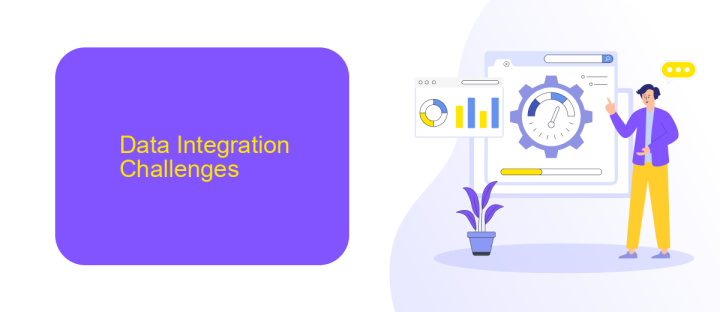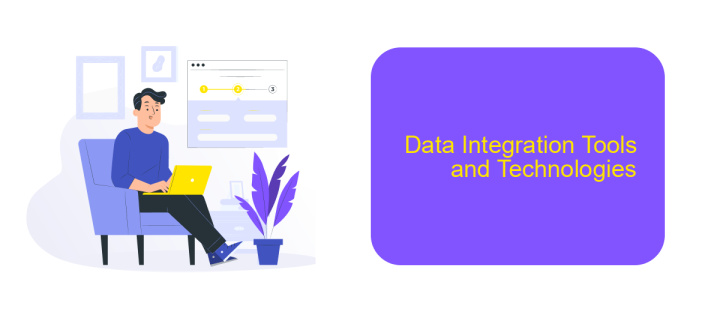Data Integration Approach
Data integration is a crucial process in modern data management, enabling organizations to consolidate information from diverse sources into a unified view. This article explores various data integration approaches, highlighting their benefits and challenges. By understanding these methods, businesses can improve data accuracy, streamline operations, and make more informed decisions. Join us as we delve into the intricacies of effective data integration strategies.
Introduction
Data integration is a critical process for organizations aiming to unify disparate data sources into a cohesive and accessible format. It enables businesses to make informed decisions, streamline operations, and enhance overall efficiency. By leveraging effective data integration strategies, companies can harness the full potential of their data assets.
- Centralized data management
- Improved data quality and consistency
- Enhanced decision-making capabilities
- Streamlined business processes
One of the tools that facilitate seamless data integration is ApiX-Drive. This service offers a user-friendly interface that simplifies the setup of integrations between various applications and data sources. By using ApiX-Drive, organizations can automate data workflows, reduce manual intervention, and ensure that data is consistently up-to-date across all platforms. This not only saves time but also significantly reduces the risk of errors, making it an invaluable asset in the realm of data integration.
Data Integration Challenges

Data integration presents several challenges, primarily due to the diverse nature of data sources and formats. Ensuring data consistency and accuracy can be difficult when integrating information from multiple systems, each with its own data structure and standards. Additionally, the process of data mapping and transformation requires significant effort to align disparate datasets, often necessitating specialized tools and expertise. These complexities can lead to delays and increased costs, making efficient data integration a critical but challenging task for organizations.
Another major challenge is maintaining data security and compliance during the integration process. Sensitive data must be protected, and organizations need to adhere to regulatory requirements such as GDPR or HIPAA. Utilizing services like ApiX-Drive can streamline the integration process by providing automated workflows and real-time data synchronization, reducing the manual effort and risk of errors. ApiX-Drive supports various data sources and formats, making it easier to manage and integrate data securely and efficiently, thus addressing some of the key challenges in data integration.
Data Integration Approaches

Data integration is a critical aspect of modern business operations, allowing organizations to consolidate data from disparate sources into a unified view. There are several approaches to data integration, each with its own advantages and use cases.
- Manual Integration: This approach involves manually collecting and consolidating data from various sources. While it's straightforward, it is time-consuming and prone to errors.
- Middleware Data Integration: Middleware solutions act as intermediaries that facilitate data exchange between systems. They are efficient but require significant setup and maintenance.
- ETL (Extract, Transform, Load): ETL tools extract data from sources, transform it to fit operational needs, and load it into a destination database. This method is highly efficient for large-scale data processing.
- API Integration: APIs allow real-time data exchange between systems. Tools like ApiX-Drive simplify this process by providing pre-built connectors and an intuitive interface for setting up integrations without coding.
Choosing the right data integration approach depends on various factors, including the volume of data, complexity of sources, and specific business needs. Leveraging tools like ApiX-Drive can significantly streamline the integration process, ensuring seamless and efficient data flow across your organization.
Data Integration Tools and Technologies

Data integration tools and technologies are essential for combining data from different sources into a unified view. These tools facilitate seamless data flow, ensuring consistency and accuracy across various systems. They play a critical role in enabling businesses to make informed decisions based on comprehensive data analysis.
Modern data integration solutions offer a range of functionalities, from data extraction and transformation to loading and synchronization. They support various data formats and can handle both structured and unstructured data. Additionally, these tools often come with user-friendly interfaces, making it easier for non-technical users to set up and manage integrations.
- ETL (Extract, Transform, Load) Tools
- Data Virtualization Platforms
- API Integration Services like ApiX-Drive
- Data Replication Solutions
- Cloud-based Integration Platforms
ApiX-Drive, for instance, simplifies the process of connecting different applications and automating data transfers. It allows users to create custom workflows without the need for coding, making it an ideal choice for businesses looking to streamline their data integration processes. By leveraging such tools, organizations can enhance their data management capabilities and drive better business outcomes.


Conclusion
In conclusion, the significance of a robust data integration approach cannot be overstated in today's data-driven world. Effective data integration ensures seamless communication between disparate systems, enhancing operational efficiency and decision-making processes. By leveraging advanced integration tools and methodologies, organizations can harness the full potential of their data assets, leading to innovative solutions and competitive advantages.
One such tool that exemplifies the power of streamlined data integration is ApiX-Drive. This service simplifies the integration process, allowing businesses to connect various applications and automate workflows without extensive technical expertise. By utilizing ApiX-Drive, organizations can reduce manual data handling, minimize errors, and improve overall productivity. As data continues to grow in volume and complexity, adopting comprehensive integration strategies and leveraging platforms like ApiX-Drive will be crucial for sustaining growth and achieving long-term success.
FAQ
What is data integration?
Why is data integration important?
What are the common challenges in data integration?
How can automation help in data integration?
What should I consider when choosing a data integration tool?
Time is the most valuable resource in today's business realities. By eliminating the routine from work processes, you will get more opportunities to implement the most daring plans and ideas. Choose – you can continue to waste time, money and nerves on inefficient solutions, or you can use ApiX-Drive, automating work processes and achieving results with minimal investment of money, effort and human resources.

